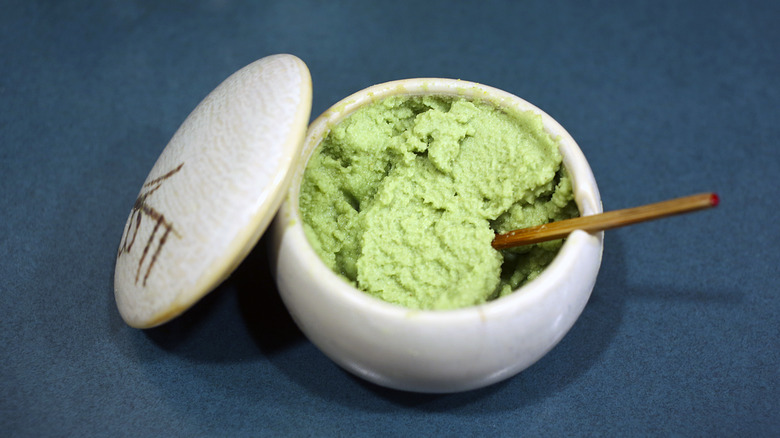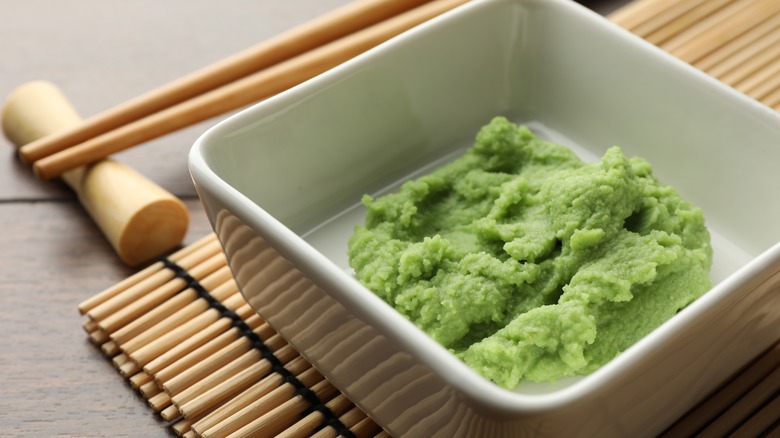How To Tell If You're Actually Eating Real Wasabi
Most people have experienced the transformative power of a good condiment. From the sour tang that ketchup imparts on a plain hot dog to the umami punch that fish sauce adds to fried rice, there's a dressing for every dish. But unlike the mustard and mayonnaise that can be found in every grocery store, some condiments are unfortunately harder to come by. True wasabi is a prime example of this. Sure, you're freely handed green scoops of the stuff at Japanese restaurants to accompany your order of sushi. Chances are, though, you're not being served the real thing.
Wasabi is one of those common foods that aren't what they seem. The version that's so generously doled out at eateries is often fake. It's a variation made of horseradish, mustard, cornstarch, and green food coloring, as opposed to the original product, which is a paste made from ground rhizomes of the Wasabia japonica plant. The reason why genuine wasabi is expensive in the United States is because of how rare these plants are. It takes a combination of ideal circumstances, such as shade and cold temperatures, to get one growing, leaving many restaurants to serve an imitation of the food instead. For those interested in being able to scout out the real deal versus fake wasabi, there are a few signs that can clue you in on the difference.
The differences between fake wasabi and real wasabi
If you've been warded off by wasabi's overwhelmingly intense flavor in the past, it was likely the imposter version of the paste you were eating. Fake wasabi is pungent. It often overpowers the other flavors of the dish it's used in and leaves a lasting flavor that lingers in your mouth. Genuine wasabi, on the other hand, has a more complex flavor profile. It still has that sharp, biting heat to it, but it's fleeting. There are sweet and refreshing notes mixed into it as well.
Another way to distinguish real wasabi from fake wasabi is its appearance. When people think of the food, it wouldn't be a surprise if their mind conjures up images of the imitation version. It's widely known for its bright green color and thick consistency, creating a true paste-like texture. Original wasabi is much paler in its green hue, with a grittier feel as a result of the ground rhizomes. These distinctions between the two varieties might not seem of any importance, but for true foodies, one taste of the condiment will show a clear difference and impact the way an entire meal is experienced.

